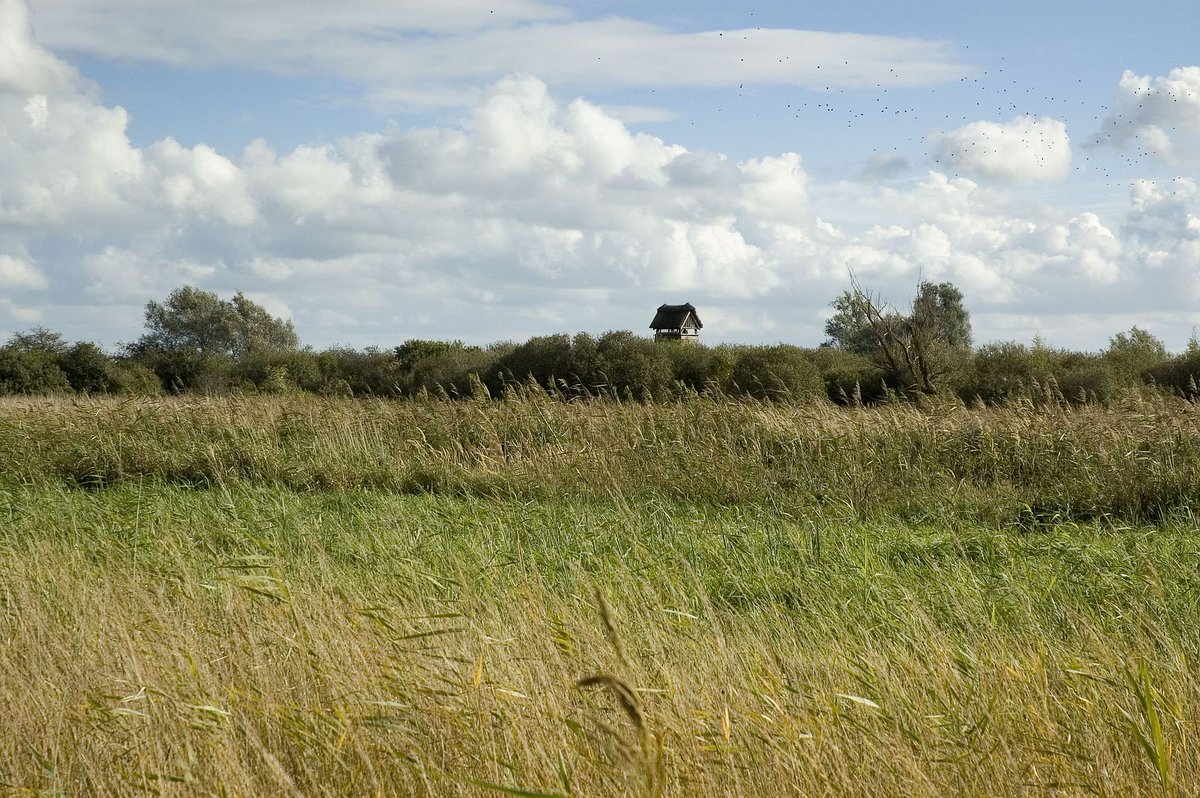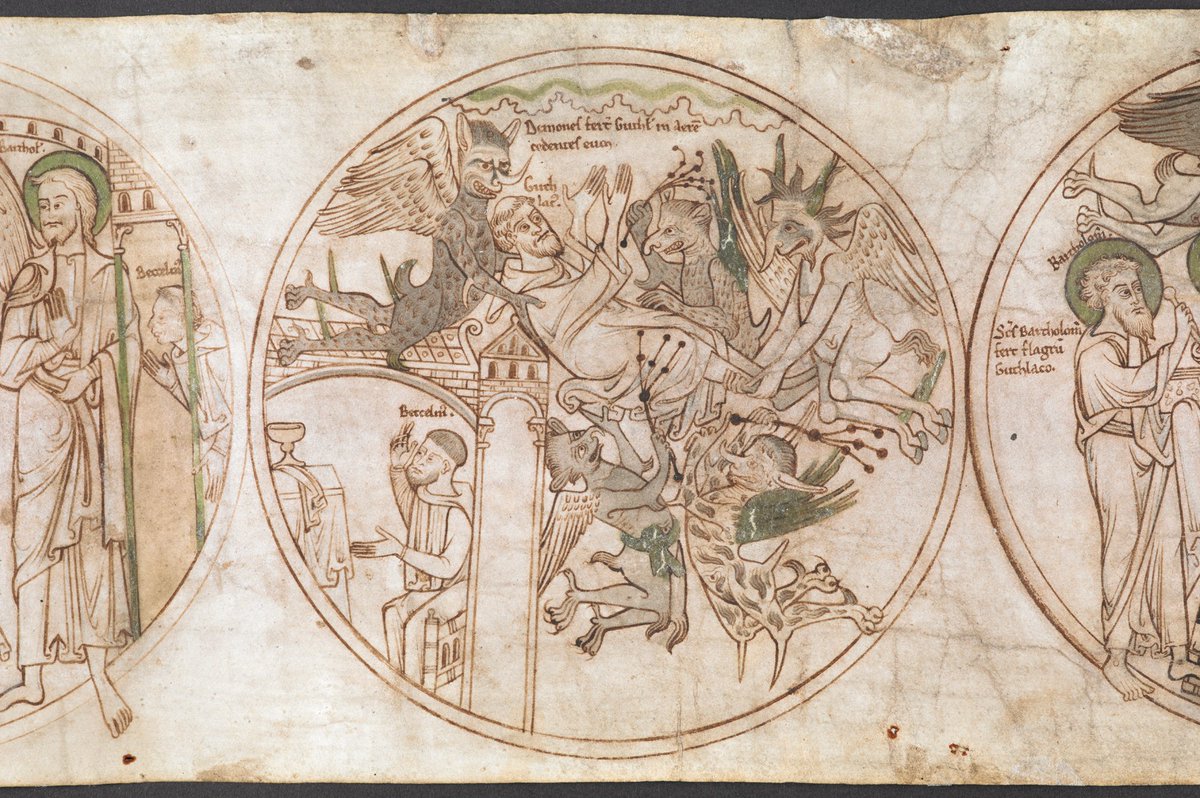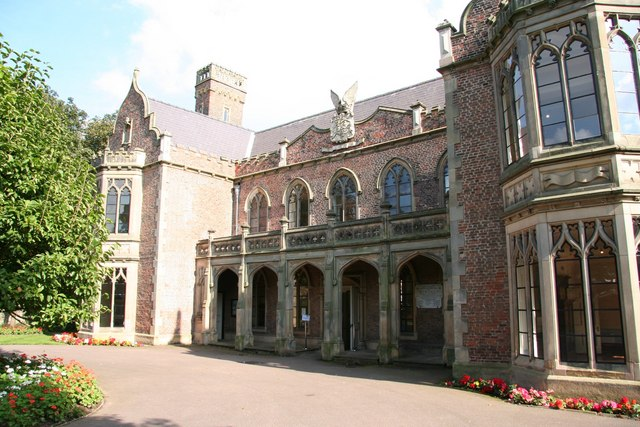MEGA THREAD. A recent tweet mentioned British imperialism and how it historically wreaked suffering abroad, but not at home. I think we need to talk about the somewhat forgotten #history of British internal colonialism. Specifically, within #TheFens of eastern England. 1/
Decolonising our studies of the past, in history and archaeology, has rightly become a central concern among many scholars. The continuing dehumanisation and exploitation of colonised peoples should be enthusiastically rejected, not enabled to continue, however unconsciously. 2/
Archaeology can be more democratic, telling not just the stories and perspectives of the powerful, but seeking to understand the lives of the nameless and powerless. However, archaeologists, too, can be complicit in perpetuating colonial narratives. 3/
Specifically, we can do this when we accept existing narratives, regarding the people we study, incautiously or uncritically, or fail to recognise our own embedded biases. So today, I’m going to explore something that might fall into that area of unconscious bias. 4/
The Fens of eastern England have been occupied since at least the Mesolithic. In the present, they are one of the most productive areas of arable farmland in Britain. However, before the 17th century, they constituted the largest area of wetland in Britain. 5/
The Romans were the first imperial entity to attempt to alter the landscape. The Romans expressed open ambivalence to wetlands, having “tamed” the Pontine marshes of Rome, and similarly sought to introduce roads, drains, canals such as the Car Dyke, and the Fen causeway. 6/
The discourse of “primitive” and “civilized” are legacies we still live with. Negative narratives regarding wetlands continued into the early medieval period. From Grendel to Guthlac, fens were viewed as the dangerous home of demons and monsters. 7/
In his Life of St. Guthlac (8th c), Felix describes demons tormenting Guthlac as “...ferocious in appearance, terrible in shape with great heads, long necks, thin faces, yellow complexions...”. Here, it is the “yellow complexions” which are of interest. 8/
Image: British Library
Image: British Library
Fenlanders throughout history, prior to drainage, were described as sallow or yellow. We now know that P. vivax malaria was endemic in the Fens, and this characteristic jaundice is likely to be an outcome of anaemia brought on by chronic infection. 9/
Described in a 19thc. poem:
The moory soil, the watry atmosphere
With damp, unhealthy moisture chills the air.
Thick, stinking fogs, and noxious vapours fall,
Agues and coughs are epidemicall,
Hence every face presented to our view
Looks of a pallid or a sallow hue 10/
The moory soil, the watry atmosphere
With damp, unhealthy moisture chills the air.
Thick, stinking fogs, and noxious vapours fall,
Agues and coughs are epidemicall,
Hence every face presented to our view
Looks of a pallid or a sallow hue 10/
What this tells us is that the “demons” described by Felix are likely to have been entirely human inhabitants of the Fens, who were not particularly happy with the presence of the newcomer. Felix also references their Brittonic speech, which cements this likelihood. 11/
What vested interest might the early medieval monastic colonisers of the Fens have had in mischaracterising the Fens as uninhabited except by creatures brutish, cruel, even demonic? The answer lies in the resource wealth of the Fens. 12/
@DrSueOosthuizen has done some groundbreaking research in establishing that what was previously assumed regarding the Fens being vacant “wilderness”, “frontier” or the “refuge” of “brigands” (as described by Darby) is, likely, inaccurate. https://twitter.com/DrSueOosthuizen/status/1166030208526356481">https://twitter.com/DrSueOost... 13/
The great wealth of the Fens was due to, not in spite of, its wetlands. Managed seasonal flooding of common pastures created unparalleled grazing opportunities, which produced some of the best dairy, meat, and wool available through cattle and sheep. https://twitter.com/DrSueOosthuizen/status/1250091825710477312">https://twitter.com/DrSueOost... 14/
In addition to grazing, Fenlanders had access to Fen resources such as sedge, fish, wildfowl, peat, and many other benefits of a diverse mixed economy including hunting and gathering, which decreased dependence on agriculture alone. 15/
We know that far from being accidental exploiters of this landscape, the inhabitants of the medieval Fens were actively involved in managing and maintaining their wetlands, as left unmanaged, wetlands of this type will revert to woodland carr. 16/
It defies belief that ecclesiastical newcomers to the Fens did not know of the resource wealth of the Fens. Their narratives say that they sought the isolation of the “wilderness”. However, again, the evidence for population in the early medieval makes this claim suspect. 17/
Indeed, the fact that the Fens later became known as the “holy land of the English” due to the establishment of no less than 5 major monasteries, later some of the wealthiest in England, with extensive landholdings, suggests mixed motives, at best. 18/
The Fens were exploited as managed wetlands for centuries, notably creating great wealth in the wool trade, which enriched merchants such as Sir Richard Aldwyn of Spalding, Lincolnshire who built @AyscoughfeeHall in the 15th century. 19/
All of this changed in the postmedieval period. Again, colonising eyes turned to the Fens. Not clerics this time, but Projectors with an emphasis on transforming the landscape. It was reasoned that the land would be superior if drained and converted to “fruitful” farmland. 20/
Fenlanders revolted. Riots occurred, and drainage efforts were sabotaged as the “Fen Tigers” resisted the destruction of their way of life. Oliver Cromwell, born on the isle of Ely, briefly backed the commoners in their struggles against the Crown. 21/
Largely, transformation of the landscape was construed as “progress”, and resistance by Fenlanders was construed as evidence of their brutish inability to understand their own interests. Earlier dichotomies of “civilization” and the “primitive” were expressed. 22/
Camden (1637) described with disgust “...a kind of people according to the nature of the place where they dwell rude, uncivill, and envious to all others whom they call Upland-men; who stalking on high upon stilts, apply their minds to grasing, fishing and fowling”. 23/
A pamphlet, the Anti-Projector pushed back: "The Undertakers have alwaies vilified the fens, and have misinformed many Parliament men, that all the fens is a meer quagmire, and that it is a level hurtfully surrounded and of little or no value..." 24/
"...but those who live in the fens and are neighbours to it, know the contrary." 25/
Shakespeare’s The Tempest has been framed as a critique of New World colonization. However, Borlik (2013) has argued for a sympathetic commentary on the plight of Fenlanders threatened with displacement by “internal colonisation”. 26/
However, modernity wielded by an imbalanced power structure was unstoppable. The Fens were drained between the 17th and 19th centuries, with loss of the commons and enclosure of landed estates, in consequence. 27/
In contrast to the immense wealth of the Fens in previous times, the Fens became an area of bleak and widespread poverty, as ordinary people lost access to the commons. Deprived of former livelihoods, agricultural day labouring became a necessary norm for many men and women. 28/
Malaria was still nonetheless still present in the Fens until the early 20th century, despite drainage, and poverty and impacts on nutrition and housing increased suffering for Fenlanders. Child mortality in the 19th century rivalled that of industrial slums. 29/
So shocked were the public health authorities to see such poor infant mortality statistics in a putatively “healthier” rural district in the 1860s, that they created an inquiry and sent Dr. Julian Hunter to investigate directly. 30/
This caught the attention of Karl Marx, who related Hunter’s findings in his work Capital. Up to that time it was supposed, that the children were decimated by malaria, and other diseases peculiar to low-lying and marshy districts. But the inquiry showed the very opposite...” 31/
“...namely, that the same cause which drove away malaria, the conversion of the land, from a morass in winter and a scanty pasture in summer, into fruitful corn land, created the exceptional death-rate of the infants.” 32/
This assessment, full of the assumptions of the time, is of course flawed. Dr. Hunter was sent to make his inquiry in 1861, only a couple of years after a large spike in malaria mortality 33/ https://www.pnas.org/content/pnas/100/17/9997/F2.large.jpg?width=800&height=600&carousel=1">https://www.pnas.org/content/p...
Malaria actually persisted well after drainage, as mosquito habitat was far from eliminated. Ditches, wells, and puddles still provided ample breeding grounds. Improvements in housing and the availability of cheap quinine later made greater contributions. 34/
Unfortunately, malaria disproportionately affects pregnant women and children, having massive impacts on maternal and childhood mortality, as well as potentially long-term population health. 35/
Hunter was outraged by what he found: “These gangs will sometimes travel many miles from their own village; they are to be met morning and evening on the roads, dressed in short petticoats, with suitable coats and boots, and sometimes trousers...” 36/
“... looking wonderfully strong and healthy, but tainted with a customary immorality, and heedless of the fatal results which their love of this busy and independent life is bringing on their unfortunate offspring who are pining at home.” 37/
Of course, this was everything calculated to horrify a respectable member of the male Victorian medical establishment. Working women! Trousers! Independence! 38/
Leaving aside the idea that impoverished women adored working long days in all conditions in the fields, before coming home to their cottages to take up their waiting domestic work, purely from selfish whim and not from financial necessity, we will move on. 39/
Marx added his further commentary, “Every phenomenon of the factory districts is here reproduced, including, but to a greater extent, ill-disguised infanticide, and dosing children with opiates...”. So, to the list of accusations, we must add infanticide. 40/
Insult was added here to injury. Fenlanders were first accused of squandering their landscape by being too stupid to recognise its potential, and deprived of their way of life. Then, they were castigated for suffering the effects of poverty thrust upon them by colonisation. 41/
It is unfortunately the case that all colonising discourses typically follow a similar pattern, regardless of setting. First, there is a lust for land and resources. But they are already occupied. So the next course of action is to discredit and dispossess. 42/
This is accomplished through stigma and othering. The colonised are never “like us”. Unfortunately, this continues to be the case today, as the landscape and people are still described as “weird” or “hostile”. https://www.telegraph.co.uk/news/uknews/1447156/These-Fen-folk-dont-get-on-with-incomers.html">https://www.telegraph.co.uk/news/ukne... #maincontent">https://www.theguardian.com/travel/2018/apr/22/a-wild-walk-in-the-fens-marshland-fen-edge-trail #maincontent">https://www.theguardian.com/travel/20... 43/
I myself observed the attitude with some bemusement as a newcomer to Britain, as I heard phrases like “normal for Norfolk” or jokes about @PlasmodiumBoy and how many fingers and toes he had. There is also always the implied wit of references to duelling banjos. 44/
One of the most egregious examples I have seen of continuing stigma came from a blog post about early 19th century opium usage in the Fens (most commonly used to ease the symptoms of malaria). Remember that malaria would still have been present at this time. 45/
The blog describes the case of a woman named Mary Eason who became addicted to opium and was censured by the courts in 1825 for the death of her stunted, wasted child. 45/ https://georgianera.wordpress.com/2015/09/24/opium-eating-the-lincolnshire-fens-in-the-early-nineteenth-century/">https://georgianera.wordpress.com/2015/09/2...
Mary Eason stood accused of taking opium while breastfeeding her child, which caused “injury” to her second child, and the loss of four subsequent children. Whilst it is more than likely she was indeed taking opium, speculation as to why does not include possible illness. 46/
Nor does it consider that if she had acquired P. vivax malaria during pregnancy, she would be at greater risk of babies born at low birth weight who would indeed be born “diseased from birth” and at high risk of dying in infancy. 47/
However, the bloggers promise “for reasons that will perhaps become clear, we’re not going to judge poor addicted Mary Eason.” 48/
This promise does not wear well. In perhaps the greatest non sequitur of my experience, the blog goes on to say “We’ll be honest here, when we first went hunting through the records for Mary Eason and her children we half expected to see a trail of illegitimate children...” 49/
“...But no, Thomas Eason is named on all the baptisms and burials as the father, the address is always Cobgate and his profession does not change...As we have not judged Mary, neither will we judge Thomas Eason.” (!!!) 50/
Such unfair assumptions are rife, where injustice is linked to poverty, poverty and disease are linked to addiction, and addiction is linked to moral judgement. 51/
This shocking example from quite recent history does not stand alone. The Fens themselves are described today much as they were in the past: weird, eerie, even creepy. And all by outsiders. As someone who has lived in the Fens, I find this baffling. 52/
But the people themselves continue to be misjudged, stigmatised, and suffer the effects of inequalities. As with all postcolonial legacies, this extends to health, as the Fens are poorer and have worse health than bordering areas. https://www.cambridge-news.co.uk/news/cambridge-news/public-health-inequality-poverty-fenland-14318834">https://www.cambridge-news.co.uk/news/camb... 53/
As archaeologists, we have begun to become aware generally of the need to become mindful of the stories we tell. One of the many indignities heaped upon colonised people is the power disparities expressed in narrative, where history is a story told by the victors. 54/
Of the many Fenlanders I have known and had the pleasure of living among, few have expressed great awareness of the history of landscape use even a few hundred years ago, or how present disparities came to exist. 55/
And of the losses suffered by Fenlanders over the centuries, it is perhaps their right to memory which seems the saddest. End/

 Read on Twitter
Read on Twitter




